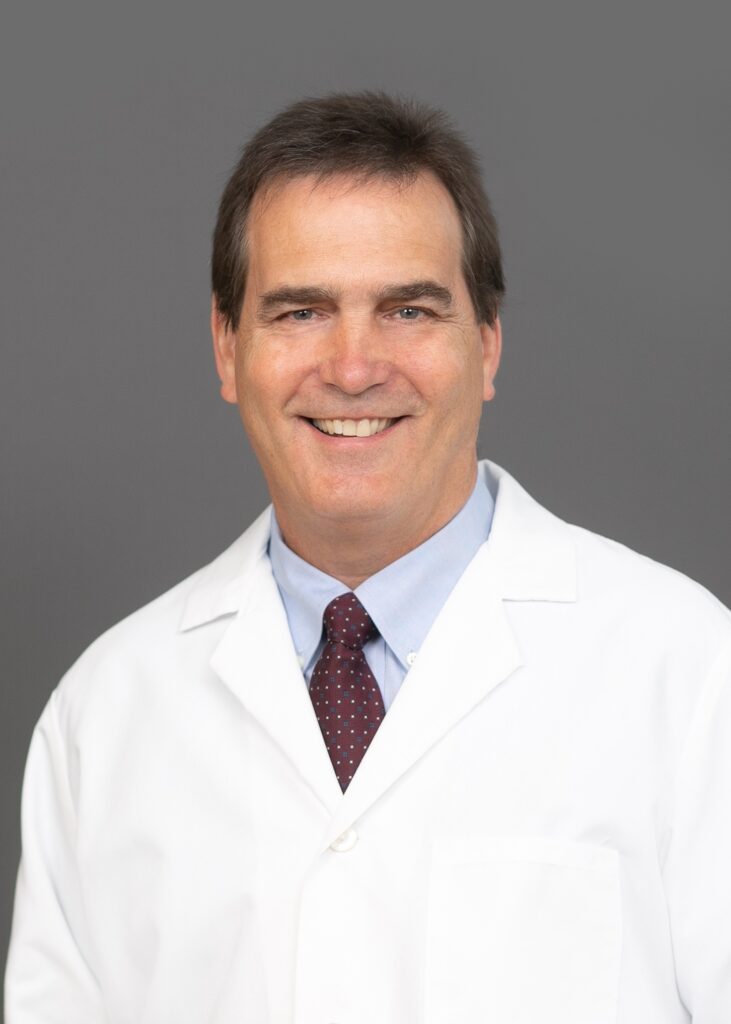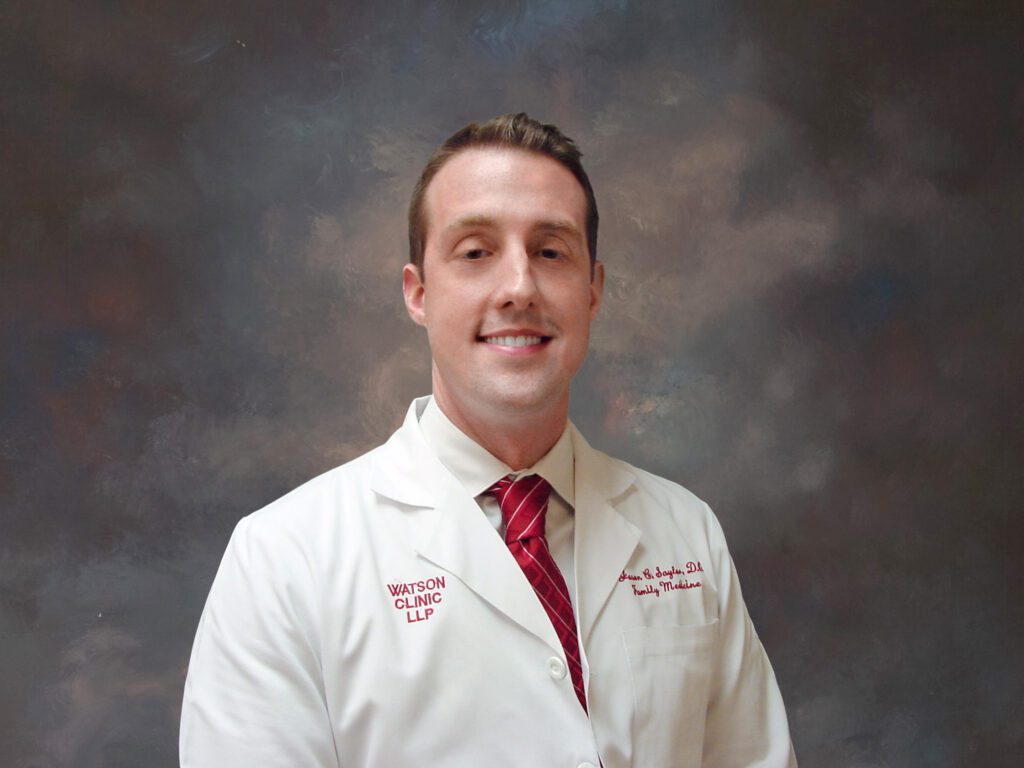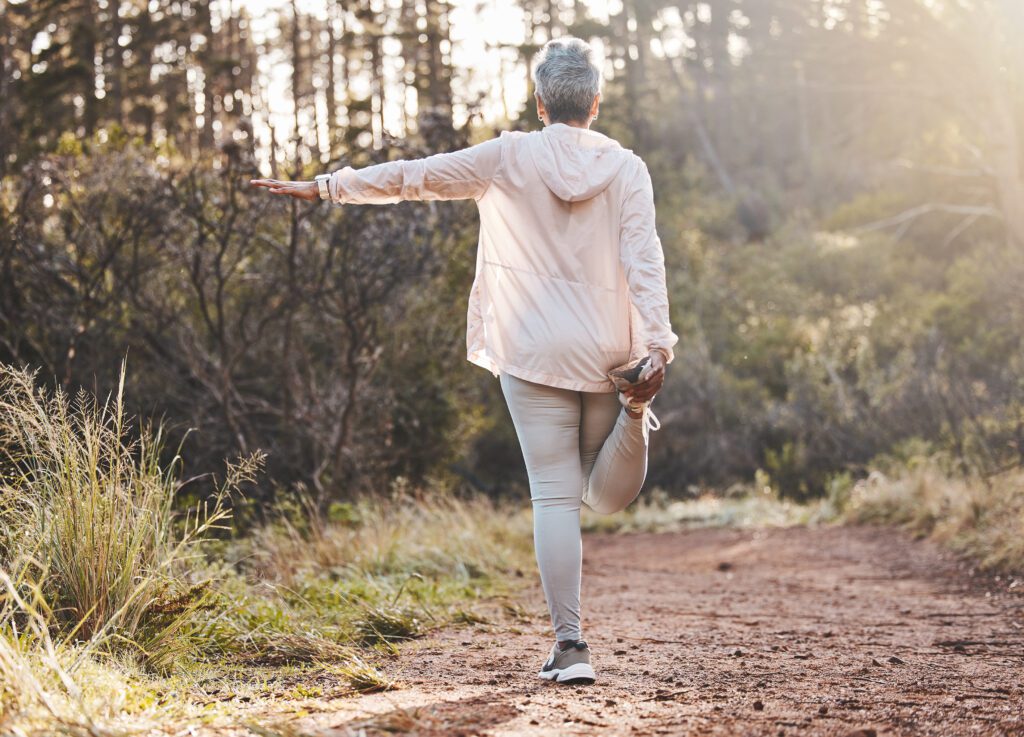Doctors Weigh In on the Importance of Exercise for Older Adults
by TERESA SCHIFFER
Physical activity is recommended for every age group, and as we age it becomes even more important to keep our bodies moving. There are many benefits associated with exercising on a regular basis, including better diabetes control, increased flexibility and stamina, and improved balance, coordination, and cognition.
“Ideally, seniors should be getting either 30 minutes, five days per week, of moderately intense aerobic exercise or a minimum of 20 minutes, three days per week, of vigorous aerobic activity,” says Watson Clinic’s Dr. Jason Saylor, a board-certified family medicine physician practicing in Lakeland.
“I also recommend 10 minutes of static stretching on the days of aerobic exercise to help improve range of motion and limit the chance of injury.”
Saylor also emphasized the importance of balance exercises in seniors’ routines, saying about 10 minutes at least two days a week is ideal.
Outside of formal physical therapy, consistent physical exercise is the only way to improve balance, which can be greatly affected by conditions like arthritis, neuropathy, and generalized loss of muscle strength. Tai chi and yoga workouts are popular options for improving balance that can be pursued through local classes or at home.
A moderate degree of exercise requires at least 30 minutes of exertion, five days per week, and is at a level of intensity sufficient to raise the heart rate and breathing of the participant. Vigorous activity indicates an elevated heart rate and breathing, plus sweating, and should be engaged in for at least 25 minutes at a time, three days a week.
Dr. Robert Atkins with BayCare’s Family Medicine Residency Program advises talking with your primary care provider before starting a new workout regimen, and he offers tips on gauging whether an activity is vigorous enough to produce health benefits.
“A good rule of thumb is doing activity at a pace that allows you to carry on a conversation with your exercise buddy,” Atkins says. “This is a great starting place and your family physician can guide you to increase your intensity as you improve.”


To reap the maximum rewards of exercise, Saylor advises seniors to be sure they are getting each of four different types of fitness: aerobics, muscle strengthening, flexibility, and balance. Walking, swimming, or using a stationary bicycle are enjoyable aerobic activities, but even the movement involved in doing household chores can count toward aerobic activity. For strength training, simply holding soup cans while doing squats and curls can be beneficial.
It’s good to remember that physical activity doesn’t require a gym membership or expensive equipment. A walk around the neighborhood, dancing with the grandkids, or doing yoga workouts with video instruction are effective ways to practice daily fitness without any financial investment. The important thing is to just do it – be active on a regular basis in whatever way is most appealing to you.
Saylor says some older individuals don’t get enough exercise because of a lack of motivation.
“Specific obstacles I see seniors face are difficulty finding others with whom to exercise regularly, their swimming pool is closed for the season, the traffic around them makes it too busy to walk, it’s too hot outside, etc. Ultimately, you can always find a reason not to exercise. I want my patients to understand the proven benefits of regular exercise and harness it to improve not only their longevity, but also the quality of their daily lives.”
Regular physical activity can help seniors maintain their independence and well-being by improving their strength, mobility, and flexibility, which will thereby reduce the risk of falls and other injuries. Exercise has also been shown to slow the progression of many age-related conditions, plus it improves cognition, executive functioning, and mental health.
“Even for those seniors who have never exercised, there is a notable improvement in longevity if they begin this journey in their 70s and 80s,” Saylor says.
“It’s never too late to find a program that works.”
